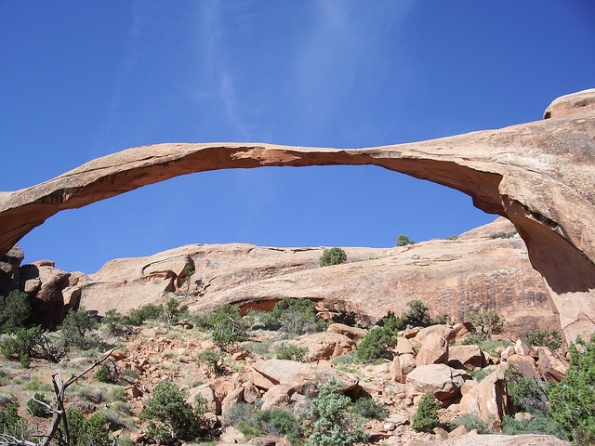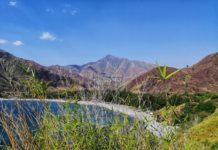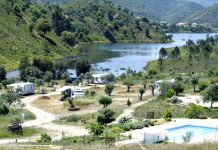The American state of Utah is one of the nation’s most scenic and diverse and is also home to some of the finest national parks around. One of these is called Arches National Park, which is just over 76,000 acres in total size.
This wonderful area of land was established as a national park back in 1971. It gets the name Arches due to the fact there are over 2,000 beautiful natural arches located in the area.
 (photo credit: skinnylawyer)
(photo credit: skinnylawyer)
These arches come in all shapes and sizes and they look magnificent standing beneath the clear blue sky. You’ll see a wide range of giant sized balanced rocks as well as pinnacles, spires, and slick rock domes. The park overlooks the mighty Colorado River below and belongs to the state’s extended canyon country, which was carved out over the years due to natural erosion and the weather.
It’s believed that inlands seas actually covered this part of the state approximately 300 million years ago. Scientists think that the land was filled by seas, which eventually evaporated, an incredible 29 times over the centuries. After the sea evaporated for the last time, it left behind numerous salt beds which are thousands of feet in thickness.
Boulders and sand later made their way down to the region from the uplands as they were carried there by fast-flowing streams. These buried the beds of salt underneath layers of stone. However, the salt is less dense than the rock that covers it and this enables the salt to rise up and form ridges and domes which are separated by valleys.
Most of the arch formations consist of soft red sandstone which was deposited there about 150 million years earlier. When the groundwater dissolved the salt deposits, the sandstone domes eventually collapsed. These formed a maze of rock slabs which created the amazing arches that you can see in the park today.
When visiting the park, you wouldn’t really know what era you were in since the scenery seems to be timeless and indestructible. The region has looked the same way for millions of years and hopefully will remain unchanged. However, the fragile desert ecosystem is threatened a little each year as over 700,000 people come to visit the park. Because of this, visitors are allowed to explore designated trails only or stay on the wash bottoms or slick rock.
The sheer number of spectacular arches in the park is a sight to behold and like snowflakes, no two are alike. If the rock formation has an opening of at least three feet wide then it can be classified as an arch. Landscape Arch is the biggest one in the park and is just over 300 feet from base to base. Some of the older arches collapse through natural conditions while new ones are formed.
You’ll find a small amount of water in Arches National Park and these are ephemeral pools. They range in depth from a few inches to a few feet and are mini-ecosystems which house insects, fairy shrimp, and tadpoles. The pools are created from rainwater that collects in the sandstone basins and potholes.
When hiking there, you’ll also notice that much of the ground appears to be black in color. This is because it’s actually alive as it’s made up of lichens, cyanobacteria, and algae. It’s an ideal foundation for many of the desert plants that can be found there.










